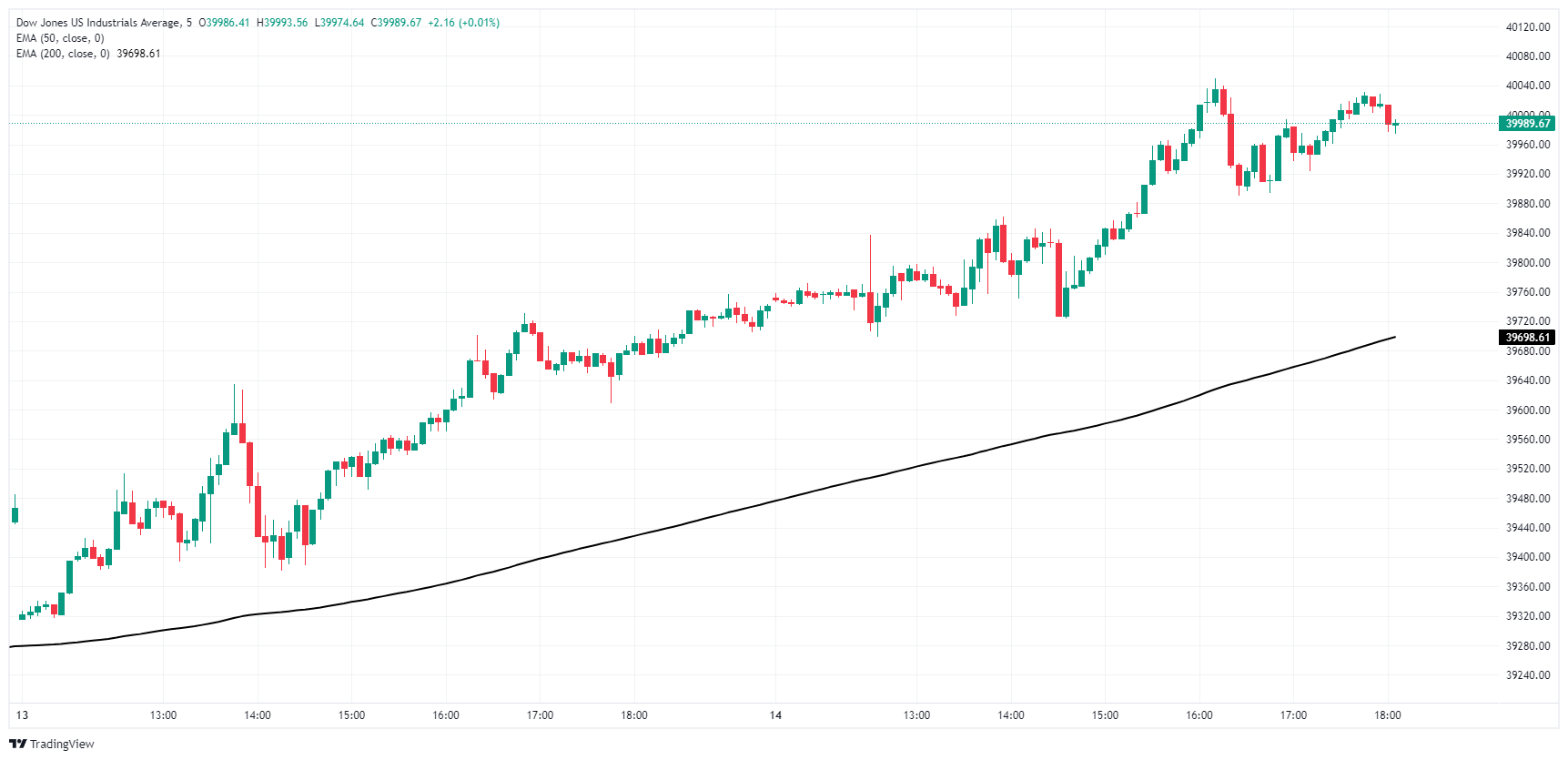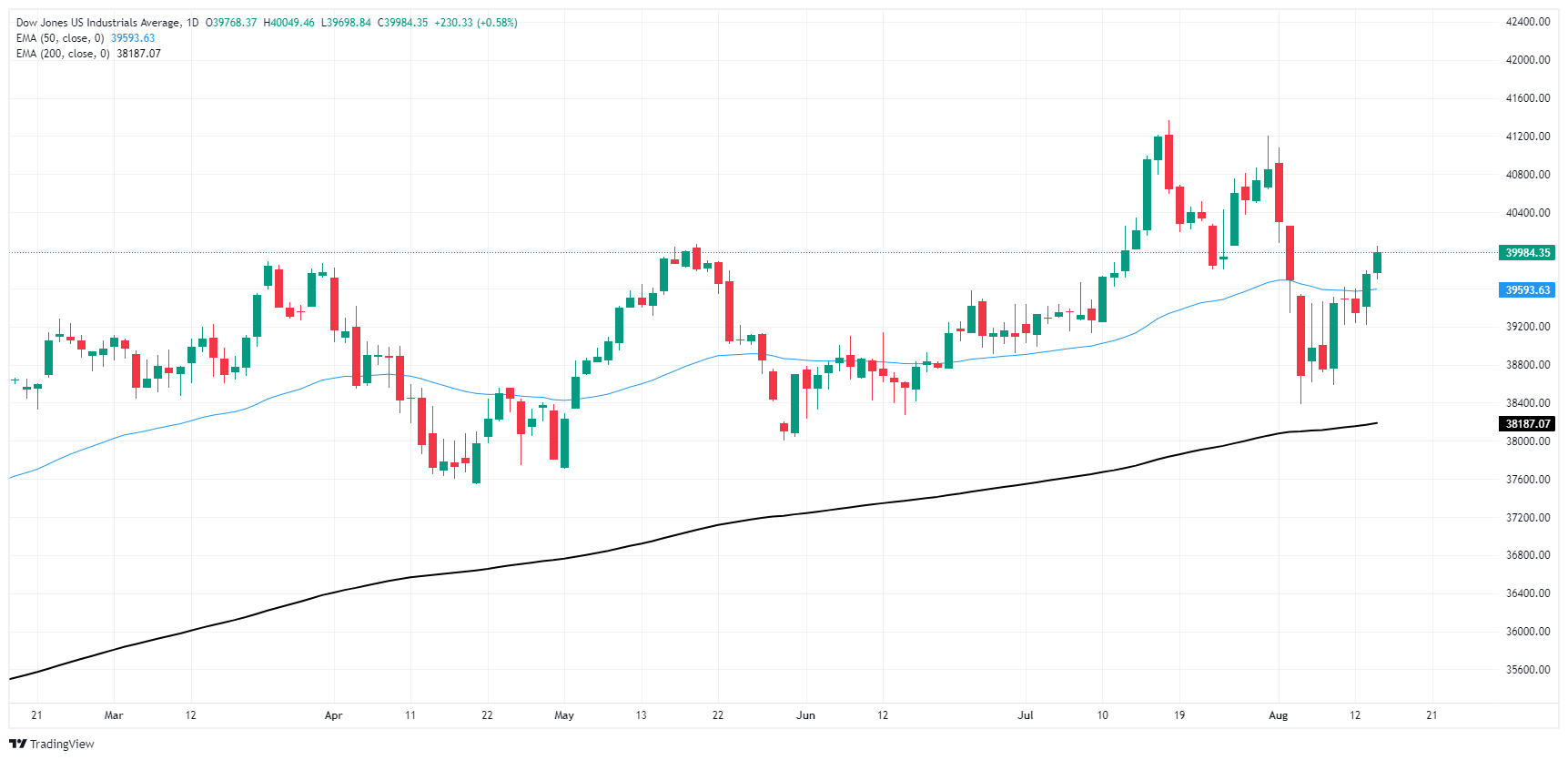- The Dow Jones rose 260 points on Wednesday following the publication of the CPI.
- US consumer inflation softened as expected in July.
- Market bets on a rate cut in September remain high, but markets had expected more.
The Dow Jones Industrial Average (DJIA) gained 260 points on Wednesday after US Consumer Price Index (CPI) inflation fell on an annualized basis, as markets had generally expected. However, some investors had higher expectations for this round of US CPI inflation after US producer-level inflation fell faster than expected earlier this week.
US headline CPI inflation came in at 2.9% year-on-year in July, slightly below the 3.0% forecast, with core CPI inflation easing to 3.2% on an annualized basis from 3.0% previously, as expected by markets. Monthly CPI figures, both headline and core, rose 0.2% month-on-month in July, but even this figure was a rounding off of the data rates of 0.15% and 0.17% for headline and core CPI, respectively.
Despite softening consumer-level inflation figures, investors were expecting even lower figures after this week’s US Producer Price Index (PPI) inflation showed sharper-than-expected declines in producer-level price pressures. However, the easing price pressures do not appear to be feeding through to consumers directly. According to the CME’s FedWatch tool, rate markets are now pricing in just a 40% chance of a double cut by the Federal Reserve (Fed) on September 18, down from 50% earlier this week and 70% the week before.
Dow Jones News
Most of the Dow Jones index is in the green on Wednesday, with four-fifths of the stock board up following the U.S. CPI. Losses were contained in a core group of recent laggards, with Intel Inc. (INTC) leading the decline, down -2% on the day at $20.00 per share. Home Depot Inc. (HD) reclaimed the top spot on the Dow on Wednesday, rising 2.5% and testing $360.00 per share.
Dow Jones Price Forecast
A second straight day of gains has the Dow Jones Index retesting the key 40,000.00 price zone, but bidders will need to work harder to push intraday price action north of the key technical level after running out of gas and pulling back from 40,040.00.
Wednesday’s gains put the Dow back on the north side of the 50-day exponential moving average (EMA) at 39,593.00. The index is also up 4.3% from a recent low near 38,383.00, and buyers have their eyes set on reclaiming all-time highs above 41,200.00 set in July.
Dow Jones five minute chart
Dow Jones daily chart
The Dow Jones FAQs
The Dow Jones Industrial Average, one of the world’s oldest stock market indexes, is made up of the 30 most actively traded stocks in the United States. The index is weighted by price rather than capitalization. It is calculated by adding up the prices of the component securities and dividing by a factor, currently 0.152. The index was founded by Charles Dow, also founder of the Wall Street Journal. In recent years it has been criticized for not being sufficiently representative, as it only tracks 30 companies, unlike broader indexes such as the S&P 500.
There are many factors that drive the Dow Jones Industrial Average (DJIA). The main one is the aggregate performance of the companies that comprise it, as revealed in quarterly corporate earnings reports. US and global macroeconomic data also contribute, as they influence investor confidence. The level of interest rates, set by the Federal Reserve (Fed), also influences the DJIA, as it affects the cost of credit, on which many companies rely heavily. Therefore, inflation can be a determining factor, as well as other parameters that influence the decisions of the Federal Reserve.
Dow Theory is a method for identifying the major trend of the stock market developed by Charles Dow. A key step is to compare the direction of the Dow Jones Industrial Average (DJIA) and the Dow Jones Transportation Average (DJTA) and only follow trends where both move in the same direction. Volume is a confirmation criterion. The theory uses elements of peak-trough analysis. Dow Theory posits three phases of a trend: accumulation, when smart money starts buying or selling; public participation, when the general public joins the trend; and distribution, when smart money leaves the trend.
There are several ways to trade the DJIA. One is to use ETFs that allow investors to trade the DJIA as a single security, rather than having to buy shares of all 30 companies that comprise it. A prominent example is the SPDR Dow Jones Industrial Average ETF (DIA). Futures contracts on the DJIA allow traders to speculate on the future value of the index, and options provide the right, but not the obligation, to buy or sell the index at a predetermined price in the future. Mutual funds allow investors to purchase a portion of a diversified portfolio of DJIA securities, providing exposure to the overall index.
Source: Fx Street
I am Joshua Winder, a senior-level journalist and editor at World Stock Market. I specialize in covering news related to the stock market and economic trends. With more than 8 years of experience in this field, I have become an expert in financial reporting.







